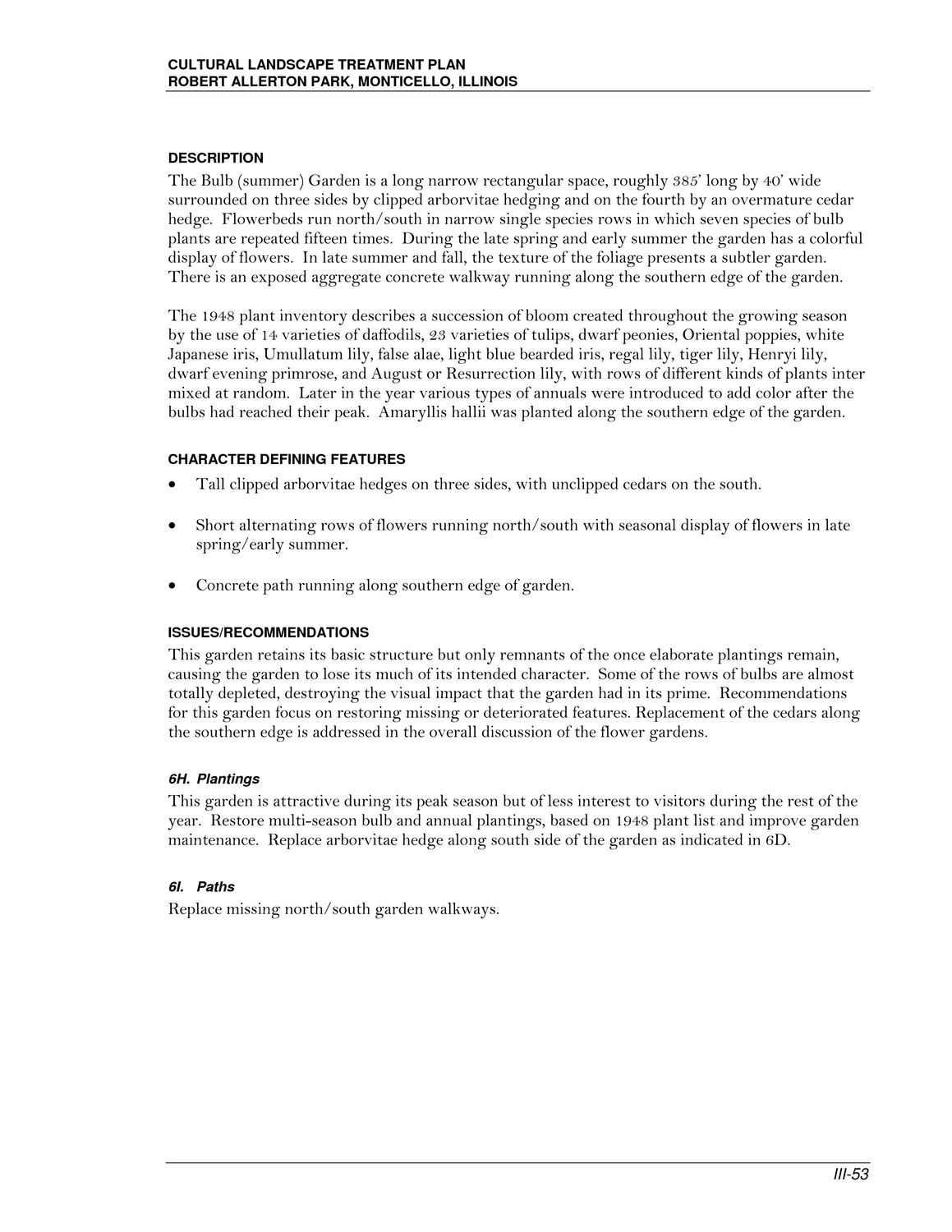Caption: Map of UIUC (2001) (Allerton)
This is a reduced-resolution page image for fast online browsing.

EXTRACTED TEXT FROM PAGE:
CULTURAL LANDSCAPE TREATMENT PLAN ROBERT ALLERTON PARK, MONTICELLO, ILLINOIS DESCRIPTION The Bulb (summer) Garden is a long narrow rectangular space, roughly 385’ long by 40’ wide surrounded on three sides by clipped arborvitae hedging and on the fourth by an overmature cedar hedge. Flowerbeds run north/south in narrow single species rows in which seven species of bulb plants are repeated fifteen times. During the late spring and early summer the garden has a colorful display of flowers. In late summer and fall, the texture of the foliage presents a subtler garden. There is an exposed aggregate concrete walkway running along the southern edge of the garden. The 1948 plant inventory describes a succession of bloom created throughout the growing season by the use of 14 varieties of daffodils, 23 varieties of tulips, dwarf peonies, Oriental poppies, white Japanese iris, Umullatum lily, false alae, light blue bearded iris, regal lily, tiger lily, Henryi lily, dwarf evening primrose, and August or Resurrection lily, with rows of different kinds of plants inter mixed at random. Later in the year various types of annuals were introduced to add color after the bulbs had reached their peak. Amaryllis hallii was planted along the southern edge of the garden. CHARACTER DEFINING FEATURES • • • Tall clipped arborvitae hedges on three sides, with unclipped cedars on the south. Short alternating rows of flowers running north/south with seasonal display of flowers in late spring/early summer. Concrete path running along southern edge of garden. ISSUES/RECOMMENDATIONS This garden retains its basic structure but only remnants of the once elaborate plantings remain, causing the garden to lose its much of its intended character. Some of the rows of bulbs are almost totally depleted, destroying the visual impact that the garden had in its prime. Recommendations for this garden focus on restoring missing or deteriorated features. Replacement of the cedars along the southern edge is addressed in the overall discussion of the flower gardens. 6H. Plantings This garden is attractive during its peak season but of less interest to visitors during the rest of the year. Restore multi-season bulb and annual plantings, based on 1948 plant list and improve garden maintenance. Replace arborvitae hedge along south side of the garden as indicated in 6D. 6I. Paths Replace missing north/south garden walkways. III-53
|